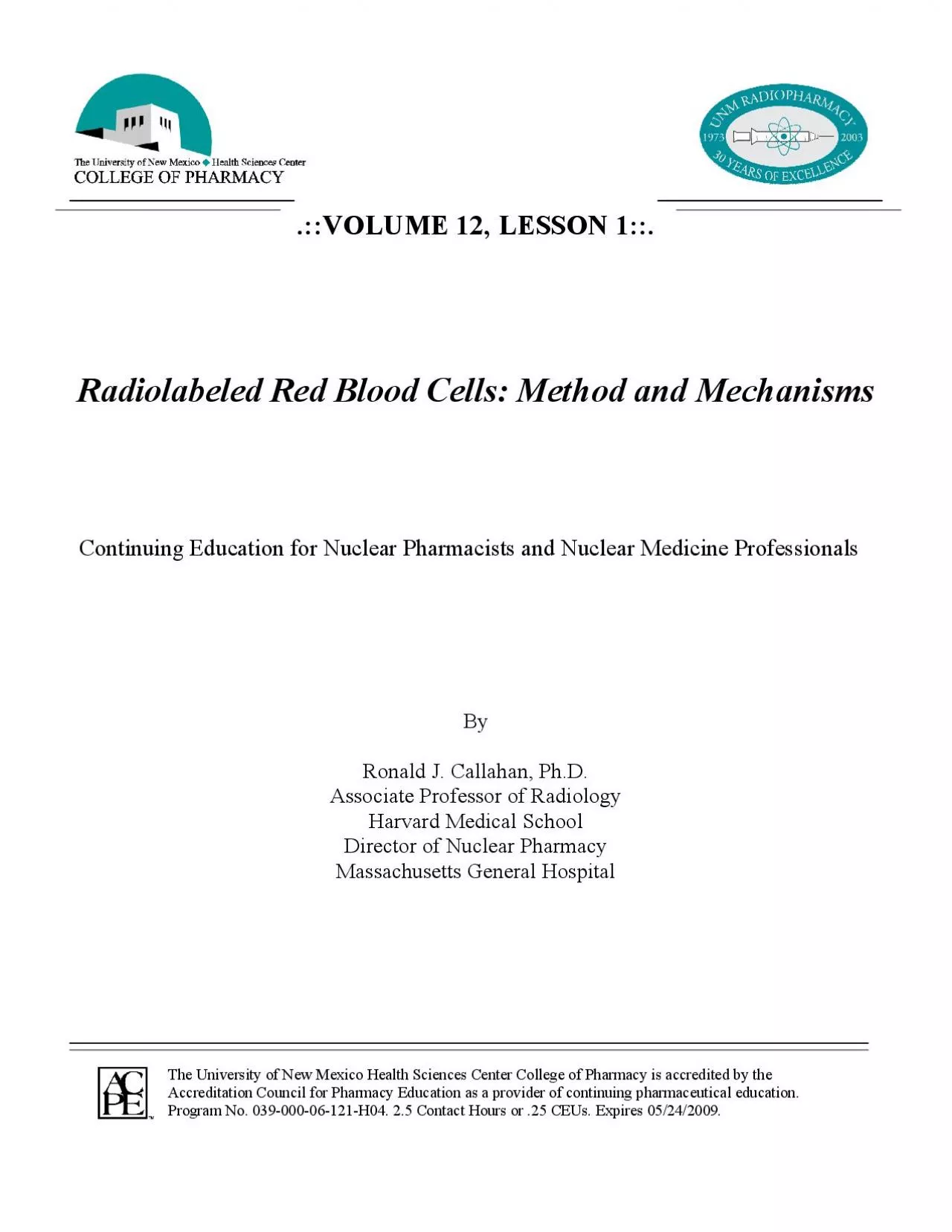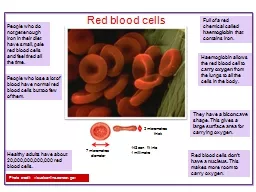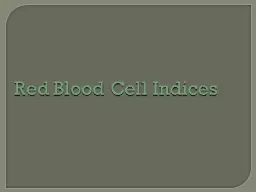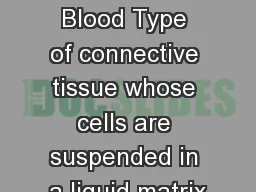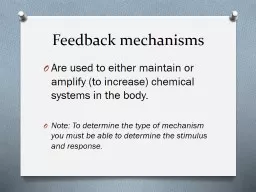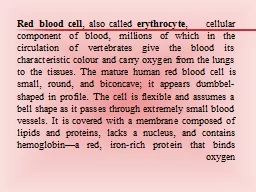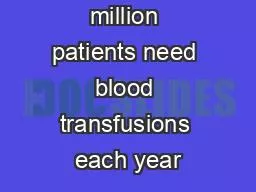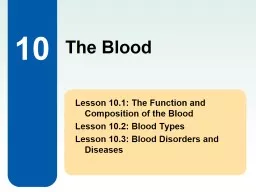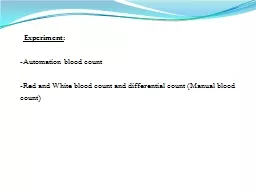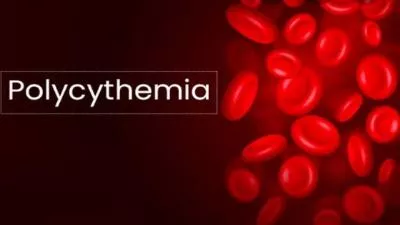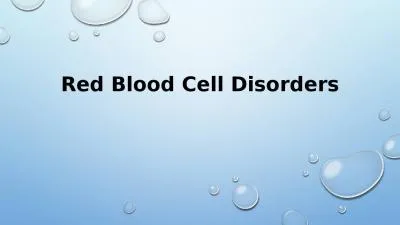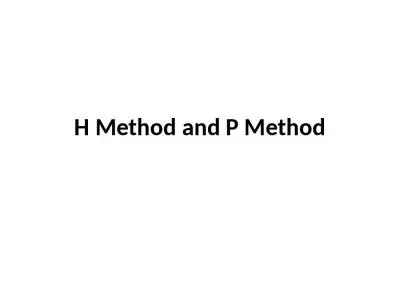PDF-Radiolabeled Red Blood Cells Method and Mechanisms
Author : mila-milly | Published Date : 2021-10-01
Page 2 of 24 By Ronald J Callahan PhD Editor CENP mD BCNP FASHP FAPhA UNM College of Pharmacy Editorial Board Sam Augustine RP PharmD FAPhA Stephen Dragotakes
Presentation Embed Code
Download Presentation
Download Presentation The PPT/PDF document "Radiolabeled Red Blood Cells Method and ..." is the property of its rightful owner. Permission is granted to download and print the materials on this website for personal, non-commercial use only, and to display it on your personal computer provided you do not modify the materials and that you retain all copyright notices contained in the materials. By downloading content from our website, you accept the terms of this agreement.
Radiolabeled Red Blood Cells Method and Mechanisms: Transcript
Page 2 of 24 By Ronald J Callahan PhD Editor CENP mD BCNP FASHP FAPhA UNM College of Pharmacy Editorial Board Sam Augustine RP PharmD FAPhA Stephen Dragotakes RPh BCNP FAPhA Richard Kowalsky Pharm. Practical Hematology Lab. - LAB 1 -. Introduction. The complete blood count (CBC) is one of the most commonly ordered blood tests. . The . complete blood count is the calculation of the cellular (formed elements) of blood. . 7 micrometres. diameter. 2 micrometres. thick. Full of a red chemical called . haemoglobin . that contains iron.. Haemoglobin allows the red blood cell to . carry oxygen . from the lungs to all the cells in the body.. Red blood cell indices . Red blood cell indices :. are measurement that describe the size and oxygen carrying protein (HB) content of red blood cells .. The indices are used to help in the differential diagnosis of anemia .. “River of life”. Transports everything that must be carried from one place to another within the body:. Nutrients. Wastes. Heat. Composition of Blood. Blood cells or formed elements:. Red blood cells – transports oxygen. Note: To determine the type of mechanism you must be able to determine the stimulus and response.. Feedback Mechanisms. Identify a Stimulus and Response. Your dog chases the ball and you say “Good Boy!”. erythrocyte. , . cellular . component of blood, millions of which in the circulation of vertebrates give the blood its characteristic . colour. and carry oxygen from the lungs to the tissues. The mature human red blood cell is small, round, and biconcave; it appears . in the US and Canada Each day 43000 units of donated blood are used in the US and Canada3Someone needs blood every 2 seconds About 37 out of every 100 Americans are eligible to donate blood 150 but 1What makes up the blood in our bodies Red Blood Cellserythrocytes The most abundant cells in our blood they are produced in the bone marrow and contain a protein called hemoglobin that carries oxygen Lesson 10.2: Blood Types. Lesson 10.3: Blood Disorders and Diseases . The Blood. Lesson 10.1. The Function and Composition of Blood. Chapter 10: The Blood. the function of blood. the formed elements. count). Experiment:. Introduction. :. A . complete blood count. (. CBC. ) is a test that gives information about the cells in a patient's blood. . Important. . To understand this test, it is important to know that the blood generally consists . Blood vessels that carry blood from the heart The tiniest blood vessels Parts of the respiratory system The extra cells cause the blood to be thicker, and this, in turn, increases the risk of other health issues, such as blood clots.. TYPES . Primary polycythemia. Secondary polycythemia. Primary polycythemia is also called polycythemia vera (PV).. Introduction . Red blood cells are characterized by a biconcave shape aids efficient navigation through narrow vessels.. Surface antigens on red blood cells determine individual blood types.. Lack of nucleus and organelles enables high hemoglobin concentration for oxygen transport.. When modeling a problem using a finite element program, it is very important to check whether the solution has converged. . The . word convergence is used because the output from the finite element program is converging on a single correct solution. In order to check the convergence, more than one solution to the same problem are required. If the solution is dramatically different from the original solution, then solution of the problem is not converged. However, if the solution does not change much (less than a few percent difference) then solution of the problem is considered converged..
Download Document
Here is the link to download the presentation.
"Radiolabeled Red Blood Cells Method and Mechanisms"The content belongs to its owner. You may download and print it for personal use, without modification, and keep all copyright notices. By downloading, you agree to these terms.
Related Documents

